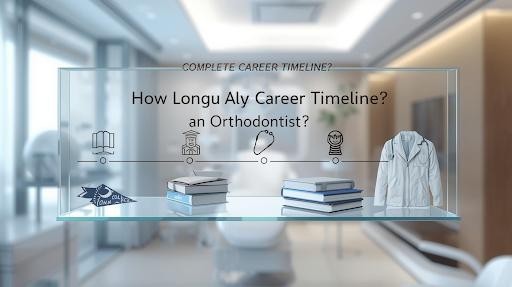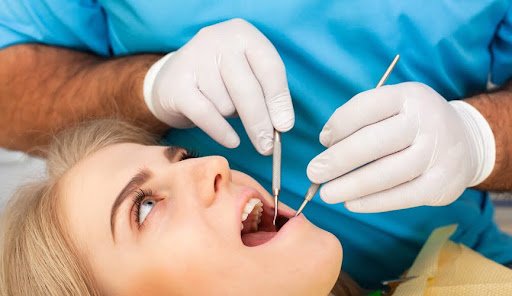The Straight Talk on a Crooked Teeth Career: More Than Just a Pretty Smile
You see the stunning before-and-after photos. You witness the life-changing confidence a beautiful, functional smile can bring. But have you ever stopped to wonder about the journey of the expert behind the braces? The path to becoming an orthodontist is a marathon, not a sprint—a dedicated and rigorous pursuit of one of the most specialized roles in healthcare.
So, exactly how long does it take to come an orthodontist? The short answer is about 10-12 years after high school. But that number only tells part of the story. This timeline represents a decade of intense academic study, competitive entry, and hands-on clinical training. It’s a journey of transforming a passion for science and art into the skill to sculpt smiles.
If you’re considering this rewarding career, understanding the full scope of the orthodontic career path is crucial. Let’s break down each step, demystify the process, and give you a clear picture of the commitment required to earn the title.
The Educational Marathon: A Step-by-Step Timeline
The road to becoming an orthodontist is highly structured. There are no shortcuts, and each phase builds upon the last, designed to forge highly competent and ethical specialists.
Phase 1: Undergraduate Studies (4 Years)
Your journey begins with a bachelor’s degree. While there’s no specific “pre-orthodontist” major, most aspiring orthodontists pursue a degree in a science-focused field like Biology, Chemistry, or Biochemistry.
- Focus: Maintain an exceptionally high GPA, particularly in prerequisite courses like organic chemistry, physics, and biology.
- The “Extras”: This phase isn’t just about grades. Dental schools look for well-rounded candidates. You’ll need to gain experience through shadowing licensed orthodontists, engage in community service, and prepare for the Dental Admission Test (DAT). Your DAT score is a critical component of your application.
This four-year foundation is where you build the academic credibility and practical awareness needed for the next big step.
Also Read More Like This: How to Stop Throbbing Pain After Root Canal
Phase 2: Dental School (4 Years)
Gaining admission to an accredited dental school, such as those listed by the American Dental Association (ADA), is a significant achievement in itself. The four years of dental school are typically split into two distinct parts:
- Years 1 & 2: Didactic and Pre-Clinical Sciences: You’ll be immersed in classroom and lab work, studying advanced topics in oral pathology, dental anatomy, pharmacology, and radiology. You’ll learn the fundamentals of dentistry on models and simulations before ever working with a patient.
- Years 3 & 4: Clinical Rotations: This is where you transition to treating patients under strict supervision. You’ll gain experience in various dental disciplines, from oral surgery to podiatric dentistry, solidifying your general dental skills.
Upon graduation, you will earn a degree—either a Doctor of Dental Surgery (DDS) or a Doctor of Medicine in Dentistry (DMD)—and are now a dentist. But to specialize, the journey continues. This is a pivotal point in understanding how long it takes to become an orthodontist, as many forget this is only the halfway mark.
Phase 3: Orthodontic Residency (2-3 Years)
This is the heart of your specialty training. Gaining a spot in an orthodontic residency program is extremely competitive. Programs look for top-tier dental school grades, high scores on the ADAT (Advanced Dental Admission Test) in some cases, and compelling letters of recommendation.
Once accepted, your residency is an intensive, full-time commitment focused exclusively on orthodontics and dentofacial orthopaedics.
- Curriculum: You’ll delve deep into topics like biomechanics, growth and development, and the principles of different appliances (braces, aligners, expanders).
- Clinical Experience: You will manage your own roster of patients, diagnosing and creating treatment plans under the guidance of experienced orthodontic faculty. This hands-on experience is irreplaceable.
- Research: Many programs require a research thesis or project, contributing to the field’s body of knowledge.
Most accredited residency programs are 2-3 years in length. This dedicated period is what truly defines the orthodontist education path and separates orthodontists from general dentists who may offer some orthodontic services.
Breaking Down the Timeline: A Visual Guide

To truly grasp the commitment, let’s visualize the timeline. This table outlines the typical path for a student starting college directly after high school.
| Stage | Duration | Key Milestones & Requirements |
| Bachelor’s Degree | 4 Years | High GPA, Science Prerequisites, DAT Exam, Shadowing |
| Dental School | 4 Years | DDS/DMD Degree, National Board Exams, Clinical Rotations |
| Orthodontic Residency | 2-3 Years | Specialized Clinical Training, Research Thesis, Patient Management |
| Board Certification | Varies | Voluntary process involving written and clinical exams |
| Total Time | 10-11 Years | (Minimum, excluding board certification) |
It’s Not Just About the Clock: Factors That Influence Your Journey
While the 10-12 year framework is standard, the actual time to become an orthodontist can vary based on several factors.
- The Competition: The most significant variable is gaining acceptance into dental school and then an orthodontic residency. It may take some applicants more than one attempt, adding a gap year (or more) to the process.
- Program Type: Are you pursuing a certificate, a master’s degree, or a PhD alongside your clinical residency? A program that includes a master’s (M.S.) typically requires three years.
- Military Commitments: The military offers excellent orthodontic training programs, but they come with a service obligation that extends the overall career timeline.
- Career Goals: Do you aspire to become board-certified by the American Board of Orthodontics? This is a voluntary but highly respected credential that requires passing rigorous exams after your residency, adding more time but also significant prestige.
Understanding these variables is essential when calculating how long does it take to become an orthodontist for your specific situation.
Is the Long Road Worth It? The Reward at the Finish Line
After over a decade of education and training, what awaits?
- High Earning Potential: Orthodontists are among the highest-paid professionals in the healthcare sector. The investment in education often yields a significant financial return.
- Professional Autonomy: Many orthodontists own their practices, giving them control over their schedule, team, and treatment philosophy.
- Profound Impact: Few professions allow you to so visibly and positively impact a person’s self-esteem, oral health, and quality of life. The gratitude of patients is a daily reward.
- Intellectual Challenge: The field is constantly evolving with new technologies like digital scanners, 3D printing, and advanced clear aligner systems, making it a dynamic and engaging career.
When you weigh the orthodontist schooling duration against these long-term benefits, the journey can feel incredibly worthwhile.
Beyond the Diploma: The Skills You’ll Truly Master
The timeline teaches you more than just science; it forges a unique skill set:
- The Art of Patience: You learn to manage treatments that unfold over months and years, mirroring your own long educational path.
- 3D Visualization: The ability to envision the final result from the starting point is a cultivated artistic and scientific talent.
- Communication: You become an expert at explaining complex treatments to anxious children and adults, ensuring they are comfortable and compliant.
- Business Acumen: Running a successful practice requires management, marketing, and leadership skills that you often develop on the job after residency.
The Final Verdict: A Decade of Dedication
So, how long does it take to become an orthodontist? From the first day of college to the day you hang your shingle as a certified specialist, you are looking at a minimum of a decade. It’s a path that demands resilience, academic excellence, and a genuine passion for patient care.
The question of how long does it take to become an orthodontist is best answered not just in years, but in the perseverance, knowledge, and skill acquired along the way. It’s a challenging road, but for those drawn to the unique blend of science, art, and life-changing results, it is one of the most fulfilling careers in medicine.
Also Read: How to Reduce Gap Between Teeth Naturally at Home
Frequently Asked Questions
What is the difference between an orthodontist and a dentist?
All orthodontists are dentists, but not all dentists are orthodontists. A dentist completes four years of dental school to become a general practitioner, focusing on overall oral health, fillings, crowns, cleanings, and dentures. An orthodontist continues their education for an additional 2-3 years in an accredited residency program, specializing exclusively in diagnosing, preventing, and treating dental and facial irregularities (like misaligned teeth and jaws).
Can the process be accelerated?
There is no way to significantly shorten the 10+ year timeline, as it is mandated by accredited educational and licensing bodies. However, some factors can make the path slightly more efficient. These include taking a heavy course load in undergraduate school to graduate early, choosing a residency program that is 24 months instead of 36, and ensuring your applications are strong the first time to avoid re-applying.
Is it possible to become an orthodontist without being a dentist first?
In the United States and Canada, the path is sequential: you must first become a licensed dentist (by earning a DDS or DMD) before you can specialize. The orthodontic residency program is a post-doctoral training. There is no direct-entry “orthodontics” undergraduate or graduate program that bypasses dental school.
What is the hardest part of becoming an orthodontist?
Most professionals point to two major challenges:
- The Competition: Gaining acceptance into both dental school and, especially, an orthodontic residency is extremely difficult. It requires near-perfect grades, top test scores, and outstanding letters of recommendation.
- The Residency: The 2-3 year residency is notoriously intense, combining a heavy patient load, complex coursework, and often a research thesis, all while being paid a modest stipend.
What personal qualities make a good orthodontist?
Beyond academic brilliance, successful orthodontists are:
- Detail-Oriented: Working with millimetre-level precision is crucial.
- Patient and Empathetic: Treatments take years, and you work with patients of all ages who may be anxious.
- Artistic & Visual: You need an eye for facial aesthetics and symmetry to create a beautiful, functional smile.
- Excellent Communicators: You must explain treatments clearly and build trust with your patients.











